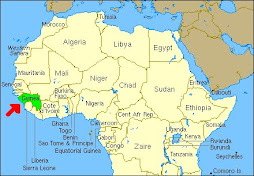This weekend has to rank among my most memorable experiences in
Five folks from varied backgrounds, who minimally knew each other, hiking across rugged country side—experiencing the “real
The hike to Jacmel cuts through the mountains on a footpath well traveled by Haitian peasants, leading from just outside Port-au-Prince, across the Southern peninsula of the claw that is
Lonely Planet describes the hike as such:
Yeah, my sore tush seconds that opinion!
That said, our group was fabulous, and each person among the five of us had a good level of flittin-around-outdoors experience. Our crew represented an almost perfect spectrum of things I am interested in: two State Department employees, a microfinance consultant to Fonkoze, and a teacher, in addition to myself.
I was intensely looking forward to some strenuous physical activity, and welcomed the sweat and heavy breathing these mountains inevitably drew from us. What I wasn’t expecting, but found overwhelmingly positive, was seeing the parts of
On day one we were on a well traveled footpath. Here we had the chance to talk to plenty people. I was determined not to miss the photo opportunities I am usually so loathe to take in the city. A chance to take a picture is also a chance to talk with people. In the city, I rarely even pause when I walk in the streets. Many folks asked us where we were headed. We got to talk with kids, see their houses, run across a WEDDING PARTY in action, on decorated mules! Women carrying 30 pounds of vegetables on their heads, and wearing whatever old shoes they had--heeled clogs or slippy sandals--walked alongside us, not even breaking a sweat. We, however, were DRENCHED! I overhead one woman in a village say in Creole, smiling at us, “Yeah, blans are crazy. They like to walk.” I just smiled and agreed, “Yeah, we are crazy.” We both laughed.
We also saw many more signs of voodoo in the countryside, the voodoo priests’ houses painted in particular styles, circular outdoor temples constructed around the poto mitan or central pole, and small stone alters built to offer food to the loa, or voodoo gods.
So we’d been told the hike could take eight hours on day one. I was shocked when we were nearing our destination for the day in five and a half hours! We’d had almost non-stop conversation about subjects I’m passionate about—forsaking or partaking in the good life in
Well, after day one’s stellar performance, we got cocky. Based how quickly we completed the first day, Winnie the lodge owner estimated day two would take us about 4 hours. No sweat. Hahaha.
Day two’s hike was a totally different experience! Whereas day one was a road through what at times appeared to be moonscape, with parched colors and massive rocks, on day two we trekked through fog and luscious foliage. Because of the fog we couldn’t see—no concept of the distance to go, the drop below, the landscape in general. Instead of conversing with other travelers, we passed through several villages. When we’d go through, literally, kids and sometimes adults came running out of the fields, yelling BLAN!! … usually followed by ba m youn ti bagay, ba m senk goud. Give me a little something, give me five gouds. Sometimes kids would whisper it repeatedly, walking behind us. Like a mantra!
Along the road, we started asking villagers how much longer to our endpoint. Ooo li loin, se bon wout enko. Oh, it’s far, you’ve got a good ways ahead of you. At first we laughed and didn’t believe them. But eventually it became clear that this was no 4-hour hike!! When a Haitian tells you it’s far, you know it’s far. These folks are used to walking hours every day!! We were starting to get a bit nervous, and the fog was turning into a drizzle that made the rocks slick.
But we got lucky when Winnie the lodge owner passed in a truck. We happily jumped in back, semi-painfully wedging ourselves between propane tanks and rusty wheelbarrows, and got ourselves down to the beach.
The happy ending was that we saved ourselves 2- 3 hours walk thanks to Winnie’s truck! We had enough time for a swim in the
A few pictures :)

A whole new meaning to a bucket o’ chicken.

Fellow travelers on the road, in all shapes and sizes. I love the smile of the girl on the left.

Leftover Carnival mask? No, it was to keep the dust off while he rode his bike. Why did I never think of that?

That way! The footpath was along the ridge of the mountains.

Not-so-highspeed action shot.
No need for horse-drawn carriage when the bride knows how to ride the horse!
The hut on the right was actually a sort of outdoor church, in the midst of a service when we passed!
Trees?! That’s rare!

This looked like total moonscape with huge rocks everywhere. You can see the path ascending in the background, cut into the mountain.

Haitian petting zoo. Just don’t scare the sheep off the cliff.
This shouldn’t have been such a remarkable sight. But it was the first forest I’d seen in
A roadside hut. The owner was napping outside.
Some plants might be too big to hug. In the top left corner of the photo is a plant that looked like it came straight from a Dr. Seuss book, huge yellow flowers towering high!
New advertisement for
The next morning. The kiddies were playing UNO in a field.

This blind man and his daughter had come RUNNING through the fields toward us, after the daughter started sounding the Blan! alert. I didn’t realize the picture was coming when I looked up.
How your vegetables get to market and people get to cities.

Cabbage for sale!!

Randomly on a crest on the side of the road, little altars (look like houses) built to offer food to the voodoo gods.

This family was totally jamming out on the porch—the rara horns, drums, and… an American flag?!

We finally made it to the beach! This little boy, Arnaud, came swimming at the same time as us, clad in holey tighty-whiteys and clutching and empty plastic jug as a flotation device. He had the most expressive face when a really big wave came, and was quite a good swimmer, even without the jug! I wanted to take him home with us.

NOT POSED! Craftily captured through the gas station window as a bathroom break turned into a ‘small’ liquor purchase which turned into quite the ride home! “A flask?! We’ve been sipping tiny flasks all weekend! No we want that one!!” points to BIG bottle!






















































